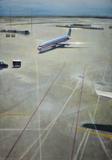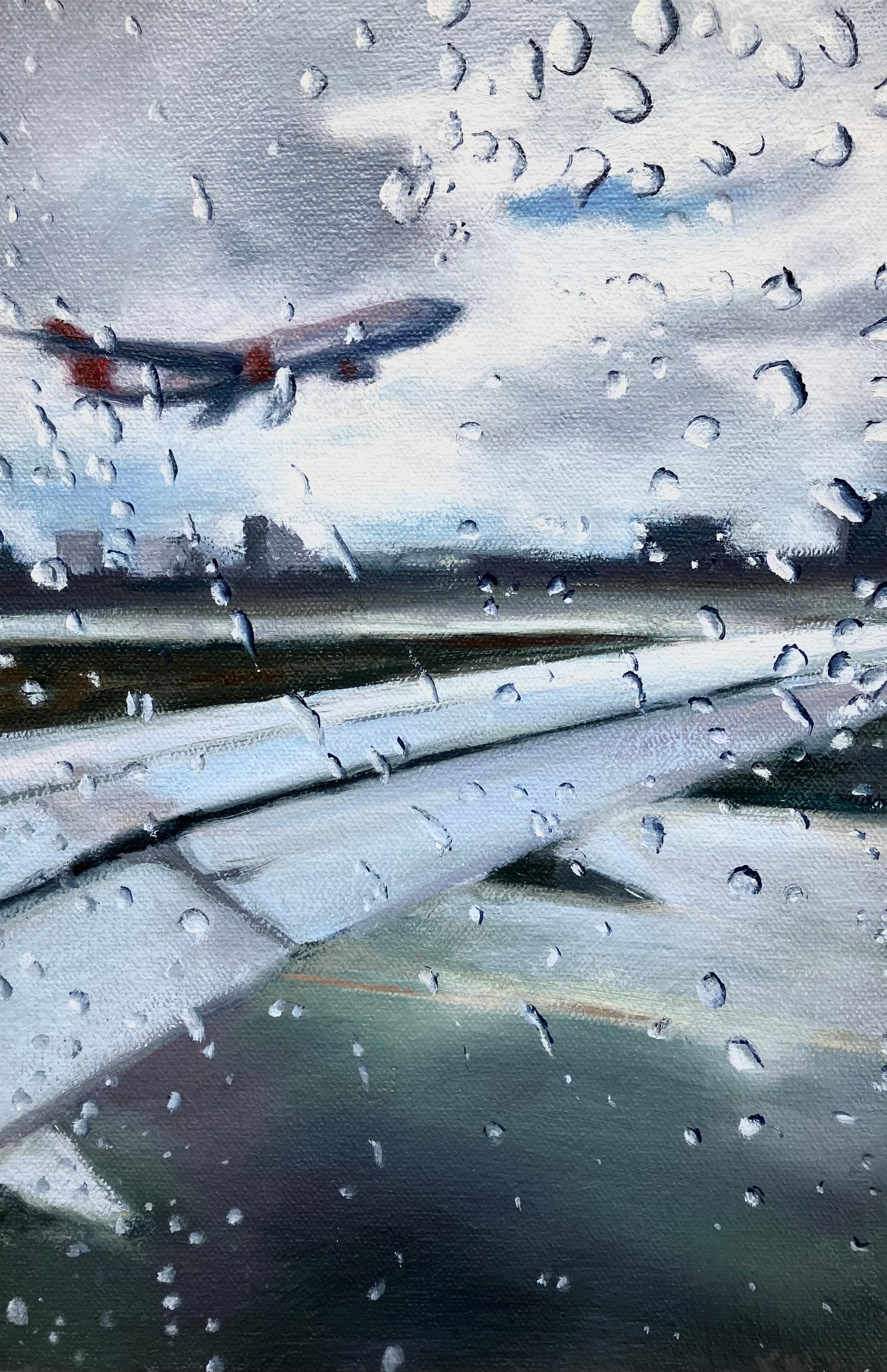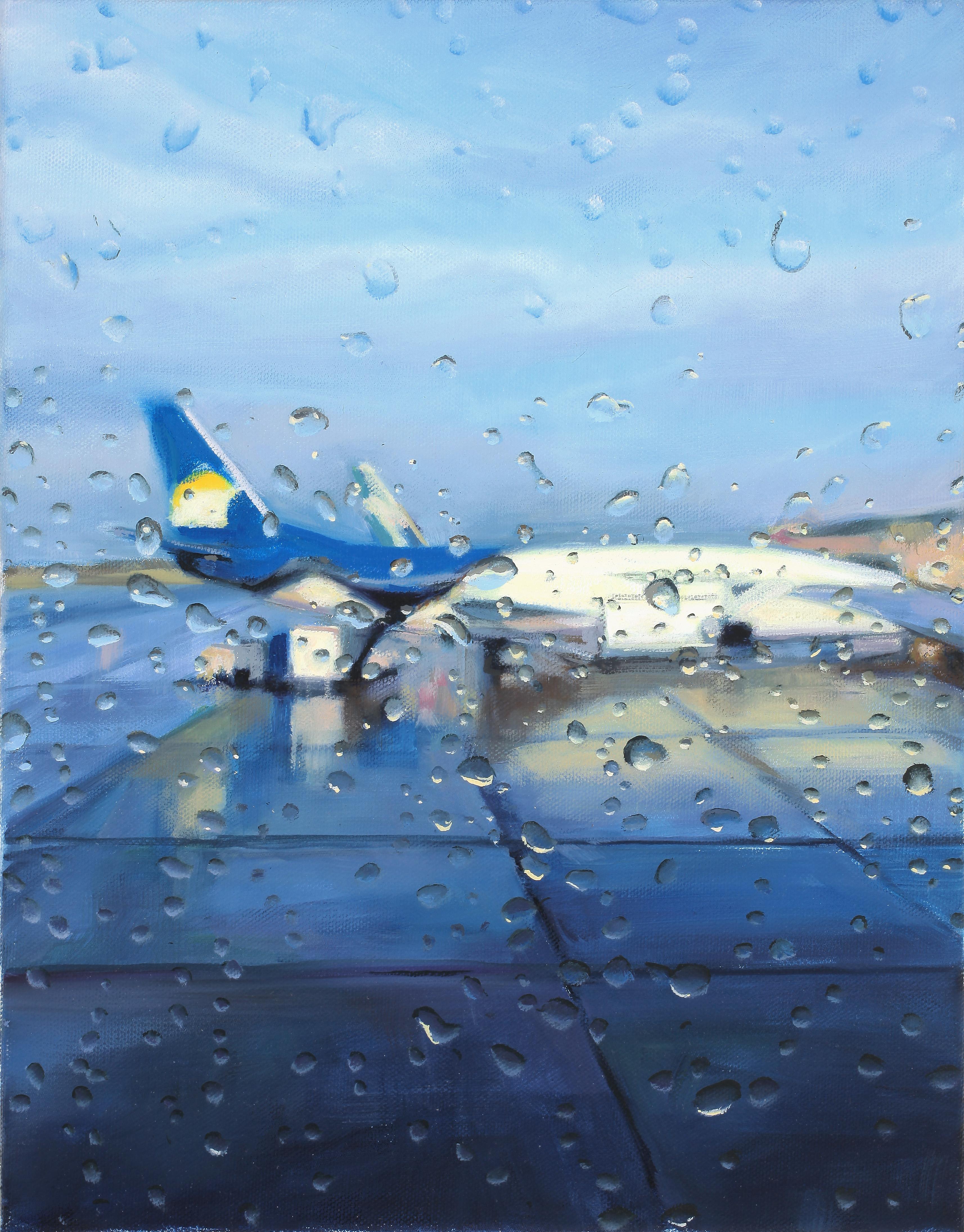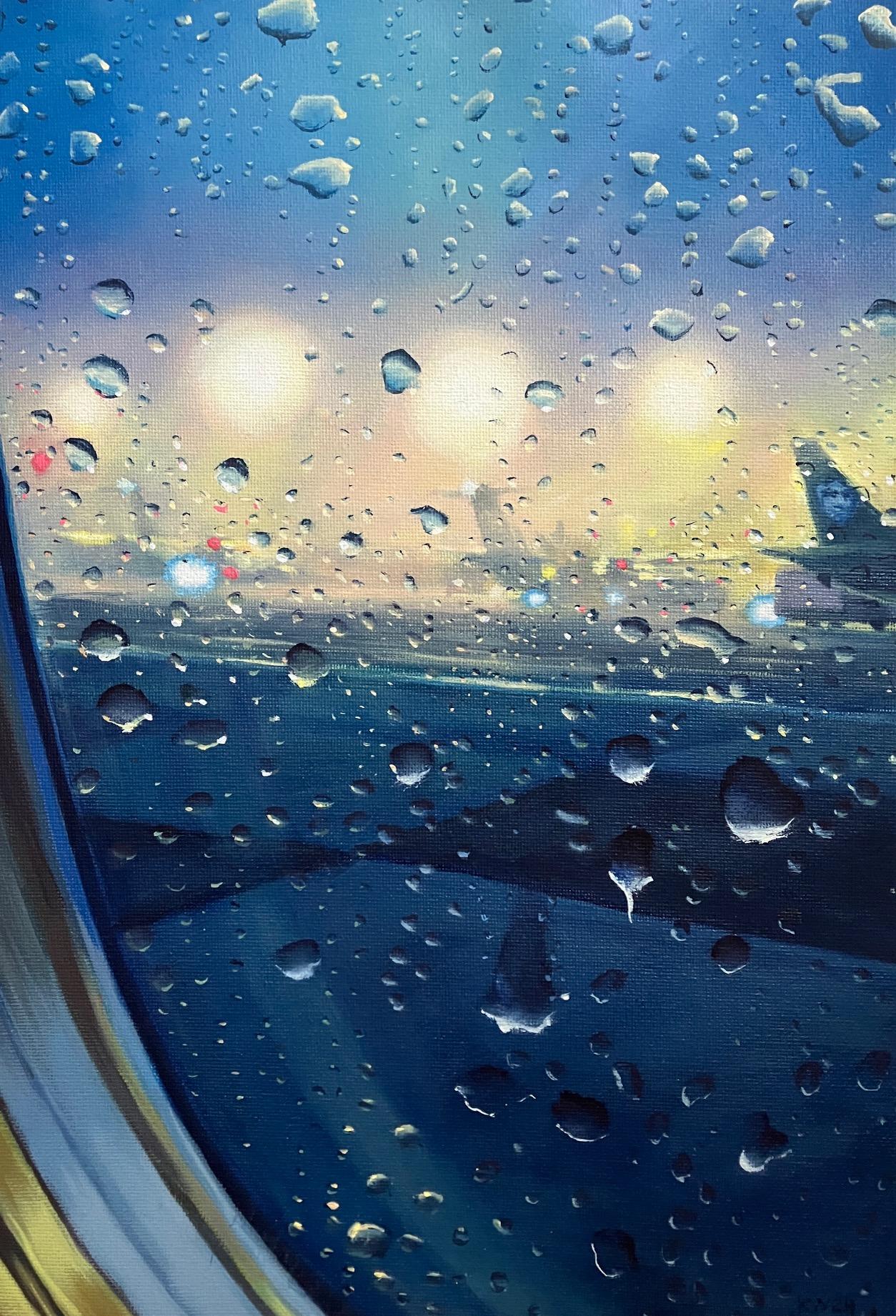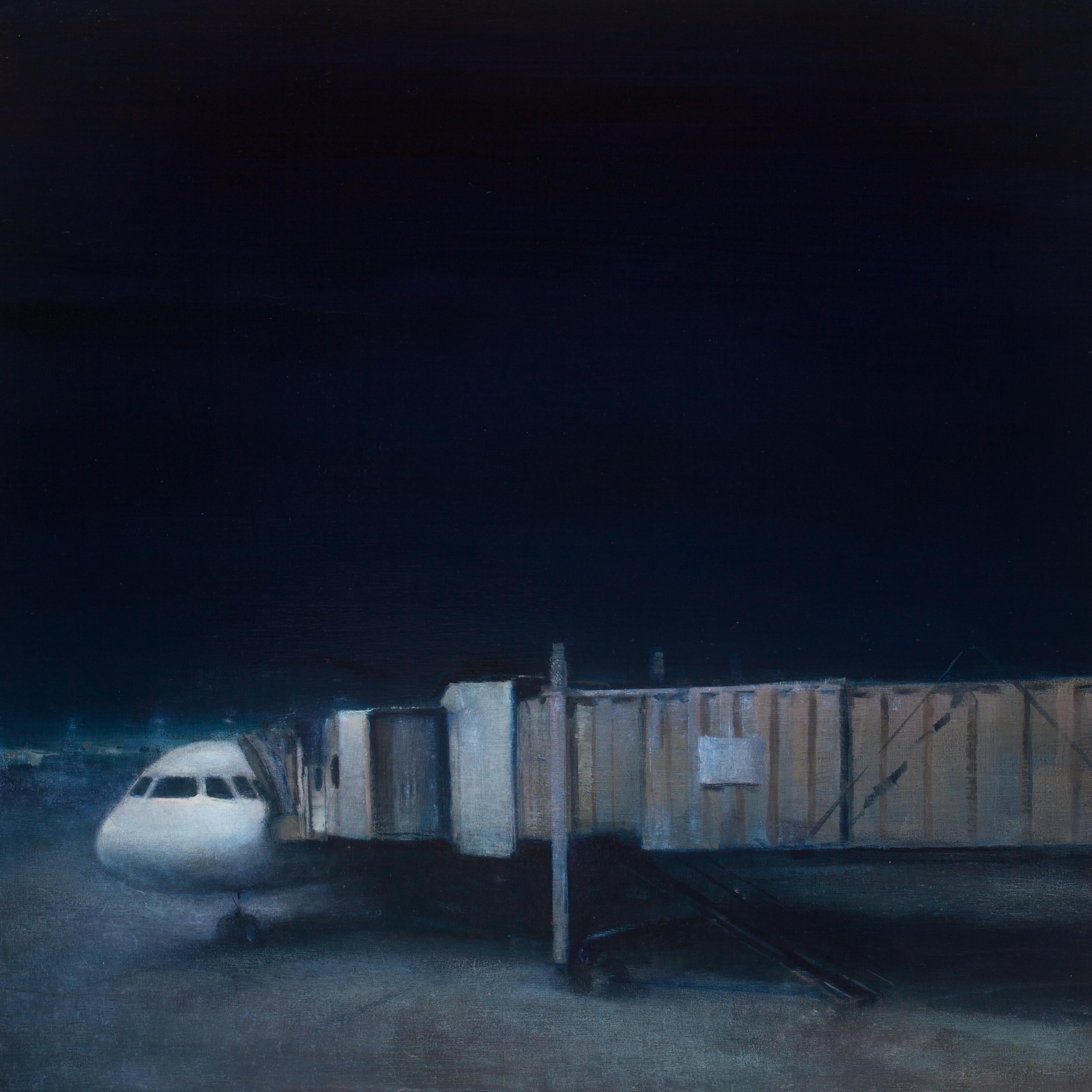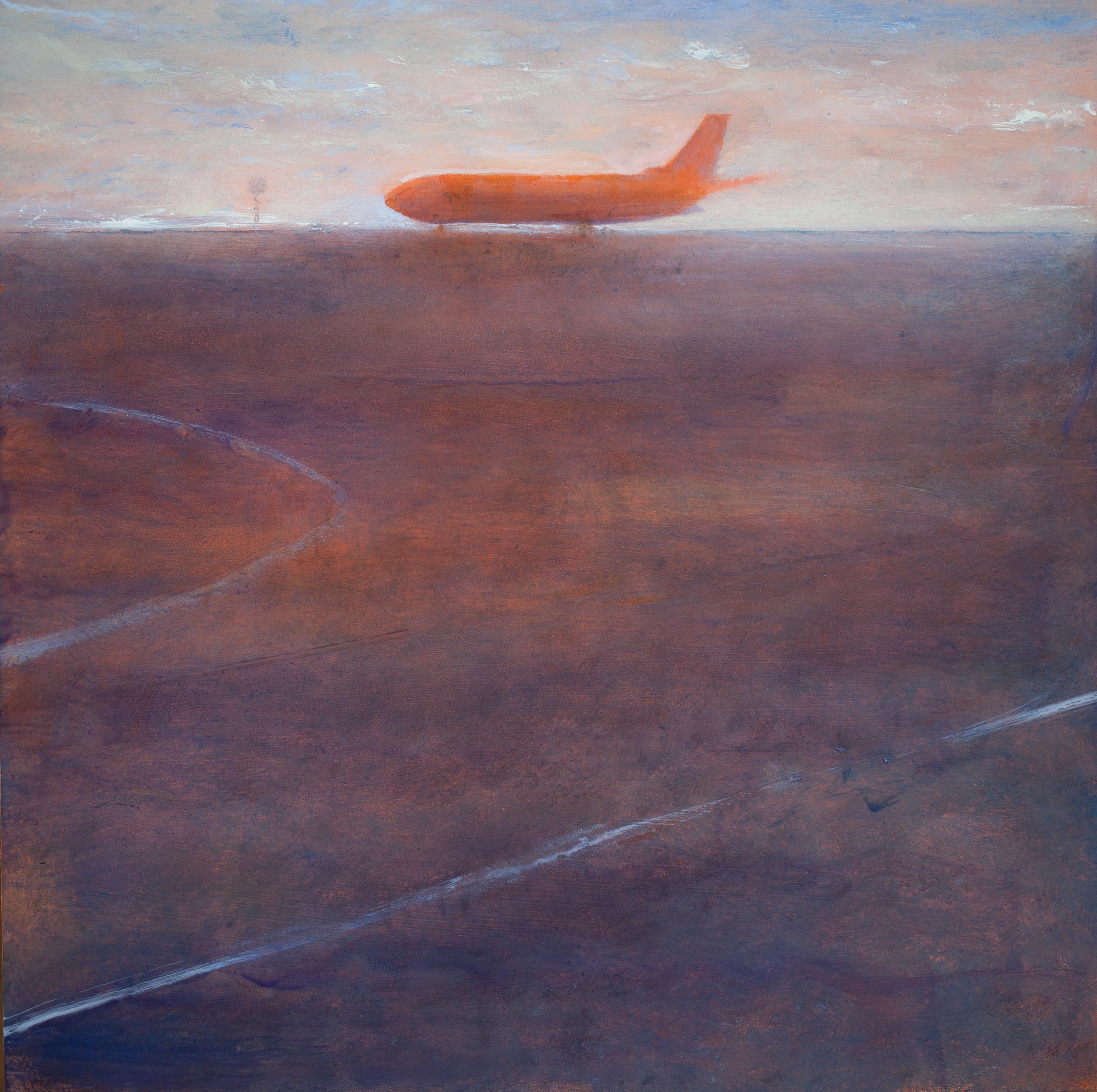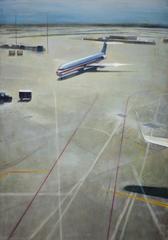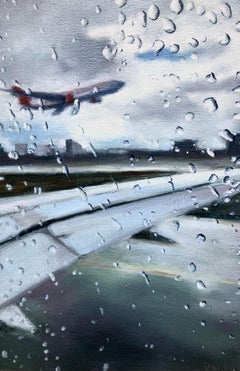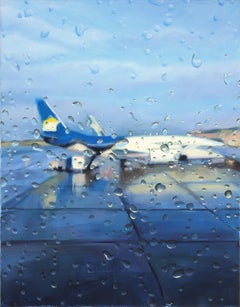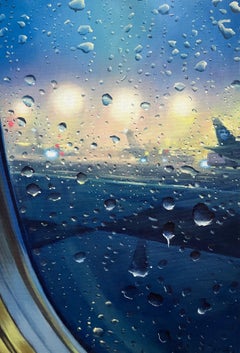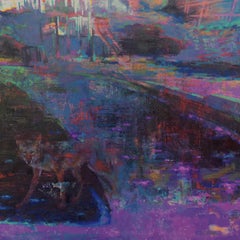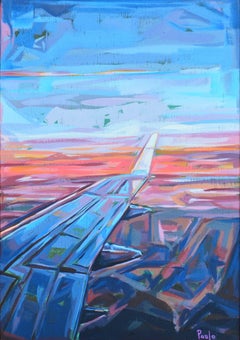Trevor YoungActive Runway
About the Item
- Creator:Trevor Young (American)
- Dimensions:Height: 12 in (30.48 cm)Width: 12 in (30.48 cm)
- Medium:
- Movement & Style:
- Period:
- Condition:
- Gallery Location:Fairfield, CT
- Reference Number:1stDibs: LU18323324101
Trevor Young
Trevor Young is a quintessentially American painter. He makes no bones about his affection for the trappings of car culture, life on the road and 1960s West Coast art. His main subject is modernism’s footprint on the outposts of Americana, places typified by harsh artificial light and hard shadows on concrete. For Young, despite the contemporary art world’s preferences for irony, disjunction and tongue-in-cheek intellectual gamesmanship, painting is at its best when it attempts to offer an unpretentious accounting of where and how we live our day-to-day lives. The celebrations of urban sprawl offered by artists like Ed Ruscha, who famously took no-nonsense aerial photographs of 34 Los Angeles parking lots in 1967 and created sleek, stripped-down paintings of Standard Oil stations, are an obvious point of reference in Young’s work. But Young’s choices seem more personal than Ruscha’s and his technique is certainly more painterly. His images of gas stations are uneasy amalgamations, cobbled together from his memories of road trips, photographs and pure invention and rendered with a sense of atmosphere and drama seemingly at odds with his use of hard lines and simple geometric shapes. Young activates every square inch of his canvases, blocking in large passages of negative space with skeins of scruffy countervailing strokes. He is not a fussy painter, nor is he out to prove his mastery to an audience. Like Edward Hopper, Young tends to eschew a lot of paint’s seductive properties, preferring to create hard edges and large, gently undulating planes of subdued color. He draws the viewer into an unpopulated, uncluttered world with a clear horizon line, but one that is also filled with hiccups, discontinuities and compromises. For Young, the cold comfort offered by outposts of convenience like gas stations, airports, cheap hotel rooms is not so easily dismissed. Young shares the strange buoyant optimism of his hero, Jonathan Richman. Spending time with Young’s paintings, one can’t help but feel the echoes of that thrill.
- ShippingRetrieving quote...Shipping from: Fairfield, CT
- Return Policy
More From This Seller
View All21st Century and Contemporary American Realist Landscape Paintings
Canvas, Oil
2010s American Realist Landscape Paintings
Canvas, Oil
21st Century and Contemporary American Realist Landscape Paintings
Canvas, Oil
2010s American Realist Landscape Paintings
Canvas, Oil
21st Century and Contemporary American Realist Landscape Paintings
Linen, Oil, Panel
21st Century and Contemporary American Realist Landscape Paintings
Oil, Panel
You May Also Like
2010s Contemporary Landscape Paintings
Oil, Wood Panel
2010s Contemporary Paintings
Oil
21st Century and Contemporary Contemporary Landscape Paintings
Mixed Media, Oil
21st Century and Contemporary Contemporary Landscape Paintings
Mixed Media, Oil
2010s American Realist Landscape Paintings
Canvas, Oil
21st Century and Contemporary American Realist Landscape Paintings
Oil, Panel
